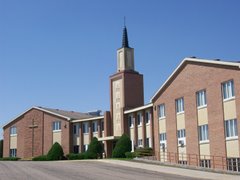Researcher analyzes State of the Church report
(As printed in the GOOD NEWS magazine for United Methodist Renewal and this article may be reprinted without change and in its entirety for non-commercial purposes without prior permission of GOOD NEWS Magazine.)
The United Methodist presence is the United States today is the same as it was in 1820. And, if trends in aging and membership losses continue at their current rates, the church will shrink to its size at the time of the Christmas Conference in 1784.
The analysis came from the Rev. Lovett Weems, a United Methodist researcher, speaking on November 6th to the denominations Council of Bishops in Lake Junaluska, North Carolina, after examining the State of the Church report released in June.
The report provides a baseline of the thoughts, feelings, values, and judgments of a cross-section of United Methodist leaders and members, said Ohio East Bishop John Hopkins, president of the Connectional Table, the leadership entity that coordinates the mission, ministries, and resources for the denomination.
The Connectional Table commissioned the report in 2005 and asked Rev. Weems to review the resulting data and feedback and identify emerging questions, contradictions, and implications.
Weems is professor of church leadership and director of the Lewis Center for Church Leadership of Wesley Theological Seminary in Washington, D.C.
Weems provided his analysis in the form of questions related to ten area: 1) theological grounding and spiritual vitality; 2) a global church; 3) church structure; 4) the aging church; 5) finances; 6) young clergy recruitment; 7) diversity; 8) the church’s future; 9) large churches; and 10) pastoral effectiveness.
The questions “lead us to wonder if we can have a future worthy of our past,” said Weems, adding that “without a new vision, the future does not look bright.” However, he also told the bishops that new visions often emerge in times of hardship. Church leaders have been struggling for decades to understand the gradual decline of the denomination’s reach in the United States, where membership is less than 8 million, and a decline of 19 percent since 1974. Forty-one percent of United Methodist churches in the U.S. did not report a single profession of faith in 2005.
Weems said the denomination has a future in the U.S. only if it can reach younger and more diverse people. “As the last century unfolded, the nation changed and the church did not,” he noted. Today, the U.S. church is smaller and older and less diverse than the country’s population, he said, noting the denomination has steadily grayed since 1975.
Weems said the issue of race and ethnicity is not as prominent in the State of the Church report as would be expected given that the U.S. is undergoing one of the most dramatic racial and ethnic shifts in its history. He said all mainline churches have statements about inclusiveness, but “there is not a single mainline denomination in the United States that has shown that it can reach any group of people other than white people as well as it can reach white people.”
The United Methodist Church is most effective at reaching whites and African Americans but is even struggling today to reach those groups, according to Weems. “The need for a renewed spirit of inclusion of people is crucial today,” he said. The church’s future will be shaped by “its willingness and ability to respond to the changing face of America.”
Weems called the lack of young United Methodist clergy both a crisis and a “complex, multidimensional phenomenon” and asked if they should be declared an endangered species. Over the last 20 years, the denomination’s U.S. clergy under the age of 35 has dropped below 5 percent.
Friday, February 1, 2008
Subscribe to:
Post Comments (Atom)


No comments:
Post a Comment